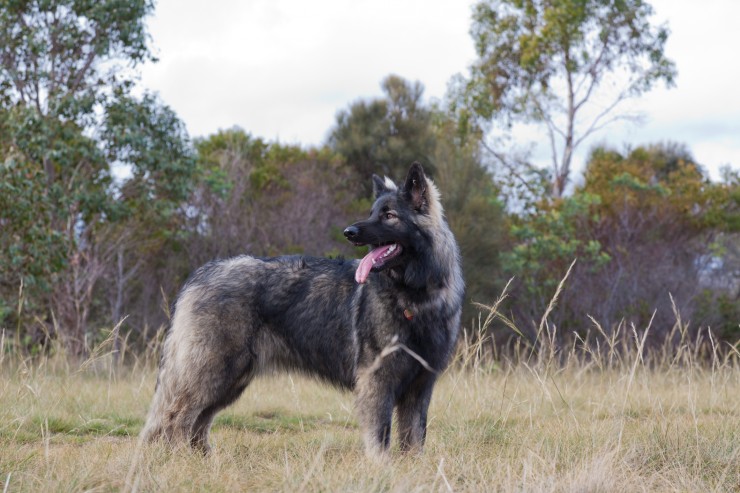
Your zdog loves his crate. He goes into it willingly, especially since you introduced him properly, according to all the dog training tips you studied. You made sure he has a nice cozy bed, and are always sure to include his favorite Kong toy stuffed with peanut butter to keep him busy. But when he tires of being in the crate and begins to whine—or rather, bark incessantly—you let him out so he won’t be upset. After all, he was so good about going in, and you don’t want him to hate it in there. That’s a very kind thought, but what is actually taking place in this scenario is that your dog is training YOU to reward his complaints by letting him out of his crate when he tells you he is ready. All the dog training in the world is highly unlikely to overcome a pack leader who allows the dog to run the show, so to speak.
Dogs are so charming. They nudge your hand when they want to be petted, they give you “those puppy dog eyes” as they patiently sit next to you while you’re enjoying a meal, and they jump up and down excitedly until you drop everything and pet them when you come home from work each day. Each of those behaviors, while endearing to the nth degree, clever, and oh so cute, are your dog’s ways of training you how to treat him. Each of these behaviors demands a response from you, which is the reverse order of how the pack structure should work.
Your dog isn’t trying to be manipulative—he lacks the brain processes to be sneaky and underhanded. But your response to his “training” of you is, in turn, training him. He’s learning that he’s in charge, which does nothing positive for either of you. In order for a dog to be confident, relaxed, and secure, he looks to you as his pack leader. When you don’t step up to that plate, then he realizes he is in charge, and all sorts of frantic behaviors can ensue as a result.
Nervous barking, fear biting, darting out the front door, poor housetraining habits—all of these behaviors are wrongly mischaracterized as “bad dog” behavior when, in reality, they are symptoms of lack of training and pack leadership that is lacking, absent, or inconsistent. Your dog wants more than anything to please you. But he has to know what you want. Seek dog training methods that calmly establish who is in charge, then consistently reward his progress in the directions in which you want him to go. If you’ve ever had a contentious boss barking commands at you, when all you can think is, “I really don’t know what you want or I would give it to you!” then you know how your dog feels when proper dog training and confident pack leadership is lacking.
If the concept of pack leadership is foreign to you, enlisting the aid of a dog trainer who is specially trained to not only train your dog, but also teach you, can begin to turn your situation around in the first session. Not only that, with in home training, your dog trainer can help identify triggers and stressors that may be getting in the way of progress so you can sort out the big picture and get on with the business of enjoying a happy, peaceful relationship with your dog—one where you’re the boss.
Dog Training – Bark Busters trainers, who have trained more than 500,000 dogs worldwide, are renowned authorities in correcting dog behavior with all-natural, dog-friendly methods. Bark Busters training is the only service of its kind that offers guaranteed lifetime support. With hundreds of offices in 40 states and 10 countries, Bark Busters is continuing its mission to enhance the human-canine relationship and reduce the possibility of maltreatment and abandonment. Bark Busters dog behavioral training services are known as the “Best of the Best” in their category. No other training company or dog trainer has received such a distinction. For more details, call 1-877-500-BARK or visit www.BarkBusters.com.
 Are There Any Downsides To Vaccinating Dogs?
Are There Any Dow
Are There Any Downsides To Vaccinating Dogs?
Are There Any Dow
 Learning About The Shiloh Shepherd Dog
Learning About Th
Learning About The Shiloh Shepherd Dog
Learning About Th
 Health & Personality - What To Look For In A Kitten
Health & Personal
Health & Personality - What To Look For In A Kitten
Health & Personal
 Puppy Vaccinations - How, When And Why
Puppy Vaccination
Puppy Vaccinations - How, When And Why
Puppy Vaccination
 Include Nutrients In The Feed For Horses With Ulcers
Include Nutrients In The Feed For Horses With Ulcers
Include Nutrients In The Feed For Horses With Ulcers
Include Nutrients In The Feed For Horses With Ulcers
Copyright © 2005-2016 Pet Information All Rights Reserved
Contact us: www162date@outlook.com